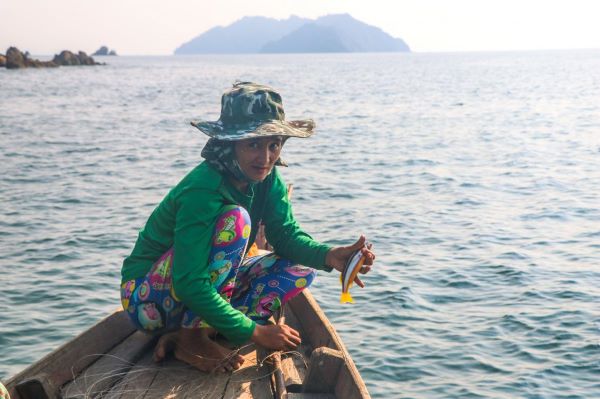First published on 05/22/2020, and last updated on 06/18/2025
The Tanawthari Landscape of Life protects the rich biodiversity of the Tanintharyi region in Myanmar with the power of Indigenous peoples’ knowledge
By Conservation Alliance of Tanawthari, with participation of our Member Kesan: Karen Environmental & Social Action Network.
The Conservation Alliance Tanawthari (CAT), an alliance of Karen community groups, calls on the Myanmar government and the international community to abandon the $21 million Ridge to Reef Project that threatens their environment and way of life. As an alternative, an indigenous-led conservation plan is offered: the Tanawthari Landscape of Life protects the rich biodiversity of the Tanintharyi Region with the power Indigenous peoples’ knowledge.
The Tanintharyi Region in southern Myanmar is an area of extreme ecological importance. The region is home to some of the largest intact expanses of low-elevation evergreen forest in South East Asia, whose rich biodiversity includes substantial tiger, tapir and pangolin populations. The coastal areas are protected by some of the best-preserved mangrove forests in the region, opening out into the vast Myeik archipelago and harbouring unique marine and island ecosystems.

Residents of Hein Line village conduct conservation activities in their community-managed forest in Lenya, Bokpyin Township, Tanintharyi Region © Conservation Alliance Tanawthari.
Indigenous communities have stewarded this landscape for generations, protecting areas of globally and locally important biodiversity according to local practices, customs and values. The symbiotic relationship between the landscape and custodian indigenous communities however is under threat by expanding agribusiness concessions and the establishment of top-down conservation mega-projects, such as the $21 million Ridge to Reef Project that plans to incorporate 34% of the region into conservation zones.
See the photo essay realized by CAT about the Tanawthari Landscape of Life.
CAT’s report, Tanawthari Landscape of Life: A grassroots alternative to top-down conservation in Tanintharyi Region, presents a vision of indigenous landscape conservation in which interconnected, locally managed territories link up to form a contiguous indigenous landscape – a landscape of life. The KNU Forest Department (KFD) are also in the process of establishing and strengthening their wildlife sanctuaries and conserved forest areas and the Landscape of Life represents a bridge to connect these conserved areas up to maintain wildlife corridors, and improve conservation across the region.
Saw Paul Sein Twa, Director of KESAN, a member of the CAT alliance said: “Conservation of small areas will not work. Indigenous peoples conserve their territories through a landscape approach by seeing the interconnections through the landscape – we have seen this through the example of the Salween Peace Park. Now it is time for governments, international organisations, businesses and the UN to learn from indigenous people.”
“The Tanawthari Landscape of Life is a vision of community driven conservation, of harmonious relationships between humans and nature, and of lasting peace,” said Esther Wah, CAT coordinator. “We hope that international organisations, donors, and the Myanmar government will hear our calls and support this vision, rather than making plans without us.”
If you want to learn more on Tanintharyi and the work of the Conservation Alliance Tanawthari, see:
- The alert we published about the Ridge to Reef project in 2018: “Burma/Myanmar – Stop the Ridge to Reef project”
- UN Watchdog Visits Myanmar to Investigate Conservation Project Jeopardizing Indigenous Peoples’ Rights, by CAT and the Accountability Counsel, July 2019.
Featured image: A woman catches fish for her household off Tayawthahangyi Island in the Myeik Archipelago, Tanintharyi Region © Conservation Alliance Tanawthari.
